Top Safety Tips for Riders in Thailand
Important: Some of the videos below show real accidents and injuries. These clips are included to help you understand the hazards you may encounter on Thai roads, not to shock you. If you are pregnant or easily distressed by such content, feel free to skip the videos and rely on the written advice.
This page is here to prepare you for riding in Thailand by highlighting common mistakes and unexpected behaviours from other road users. We also recommend reading our article on why even experienced riders sometimes have brake failures on mountain roads, as it contains practical tips to avoid this problem.
The more you know about local traffic conditions, the safer and more enjoyable your trip will be. Take your time with these warnings and explore our resources so you can make the most of your motorcycle adventure.
Riding in Northern Thailand is different from urban commuting, with mountain weather, steep gradients, and sudden changes in road surface. Wearing proper gear and learning how to use engine braking on descents makes every trip safer and more enjoyable. Understanding local driving habits also helps, especially when sharing the road with slow trucks and tour vans. For those who want both guidance and reliable bikes, our motorcycle rental in Chiang Mai provides the foundation to plan with confidence.
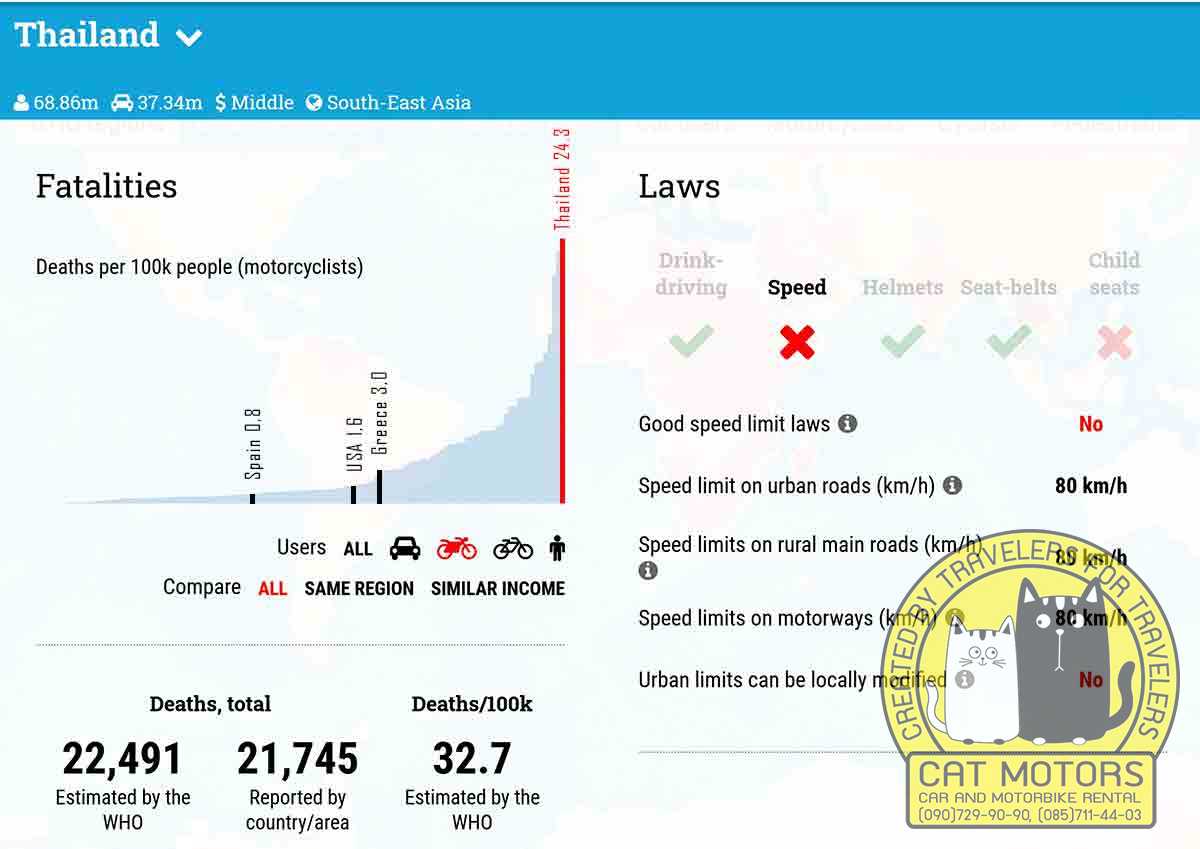
Tip #1
Intersections in Thailand can be unpredictable. It’s common to see drivers cruising through a red light a second or two after it changes, and a yellow light often prompts people to speed up instead of slow down. If you treat a green light as a guaranteed right‑of‑way, you could be surprised by someone who thinks the rules don’t apply to them.
To stay safe, pause briefly when your light turns green and check left and right before moving. Don’t assume that cross traffic will stop just because the light says they should. Approach intersections at a speed that allows you to react if someone enters from the side.
Ignoring this caution can lead to collisions, injury, and damage to your bike. A car entering the intersection against the light could T‑bone you, leaving both you and your bike badly damaged. Spending an extra two seconds to make sure the intersection is clear is a small price to pay for avoiding an accident.
Locals joke that green means go, yellow means go faster, and red means “go if no one’s watching.” It’s funny because it reflects a real problem. Don’t let someone else’s impatience ruin your trip.
If you’re curious to see what local intersections are like, watch the CCTV clips below. They show how unexpected behaviour happens and why caution is your best friend at traffic lights.
Tip #2
In rural areas of Thailand you’ll occasionally see signs reading “Caution, elephants.” These signs are not for tourists taking selfies — they’re there because wild elephants regularly cross the road at those points. An adult elephant can weigh several tonnes and doesn’t manoeuvre like a car. If you hit or startle one, you risk severe injuries and major damage to your bike.
When you see an elephant warning sign, slow down immediately and be prepared to stop. At night or in heavy rain, elephants are nearly invisible until you’re very close, so drop your speed and scan the roadside for movement. Even domesticated elephants led by mahouts may step unexpectedly into the road.
Ignoring these signs and maintaining your speed could result in hitting a large animal or braking too hard at the last moment, causing you to skid. Elephants are protected in Thailand, and injuring one can have legal consequences on top of the personal harm.
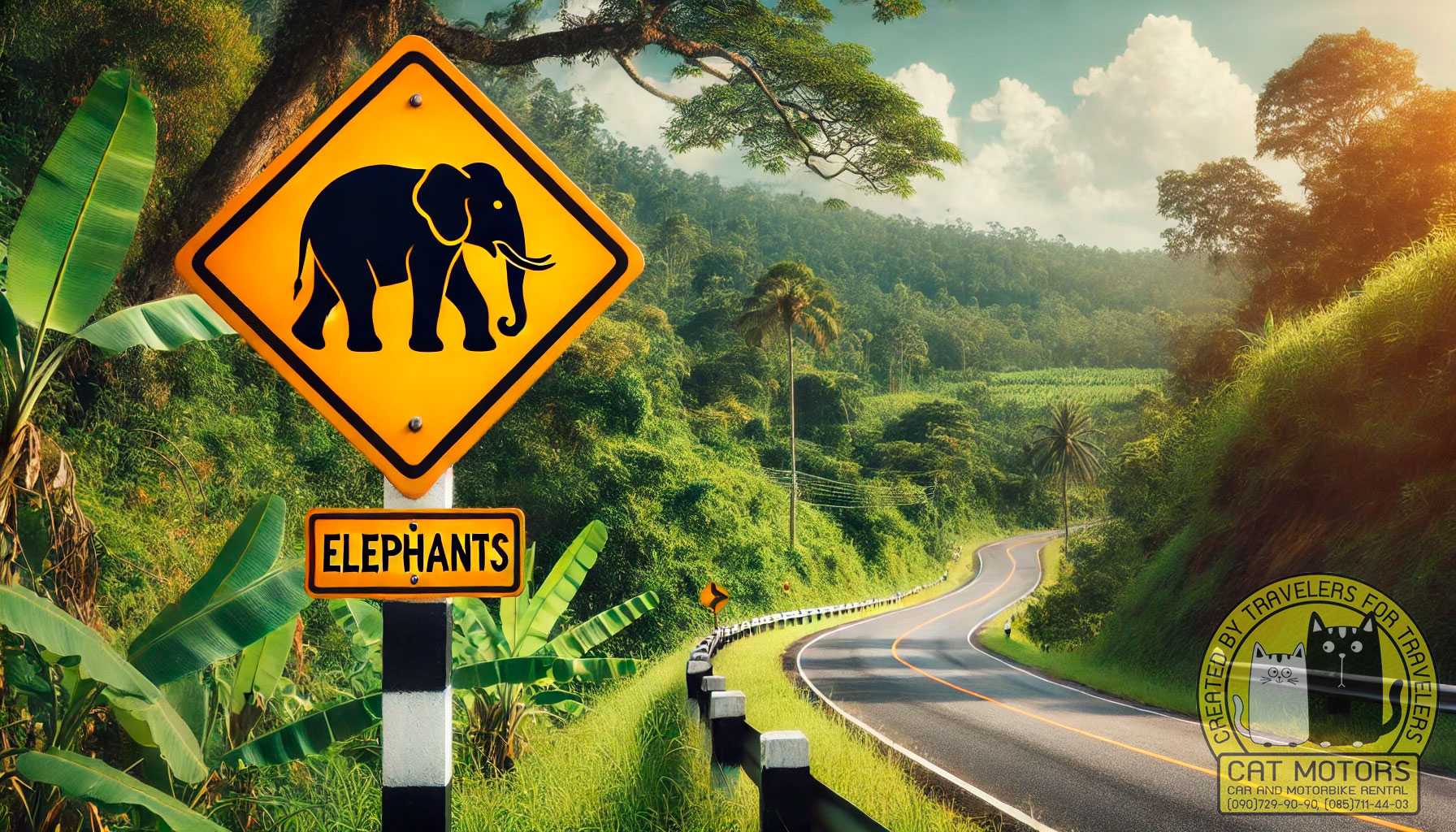
If you’re still deciding which motorcycle will handle rural roads best, take a look at our bikes index. It lists different models so you can pick a bike that suits your planned adventures.
Tip #3
Thailand drives on the left, and that can take some getting used to if you’re from a right‑hand traffic country. Staying to the left is important, but don’t hug the very edge of the asphalt. That outer strip is often littered with nails, broken glass, sand, dead leaves and gravel, all of which can cause a puncture or loss of control.
A flat tire in the middle of the countryside means a long, slow ride to the nearest repair shop, which might be 20 km away. Riding on a flat can damage the rim and suspension, and replacement parts are expensive. Watch the road surface and steer around debris instead of running through it.
Leaves, sand and gravel also create a slippery layer, especially on corners. If you hit them at speed the front wheel can lose grip and slide out from under you. Slow down before you reach a dirty patch, and keep the bike upright through the turn.
If you ignore this advice and ride through debris at speed, you risk puncturing a tire, bending a rim, or taking a fall. Being attentive to what’s on the road will save you money, time and skin.
Tip #4
Some drivers in Thailand inexplicably choose to overtake on blind corners. They seem to believe that if they can’t see oncoming traffic, then there must not be any. This is obviously false and dangerous, but it happens.
Never attempt to overtake if you can’t see far enough ahead to know the oncoming lane is clear. If you’re approaching a bend or crest where your view is blocked, stay in your lane and wait. You might be stuck behind a slow vehicle for a minute, but that’s better than meeting a car head‑on mid‑curve.
If you ignore this rule and pass blindly, you could find yourself face‑to‑face with another vehicle at speed. Swerving onto the shoulder or colliding with oncoming traffic are both scenarios you want to avoid. Patience and line‑of‑sight are essential for safe overtaking.
It’s okay to joke about “lucky amulets,” but luck is not a road safety strategy. See where you’re going before you go.
Tip #5
Riding a motorcycle is not a performance. Sometimes travellers new to biking treat the road like a stage, zipping along at high speed with one hand on the handlebars and the other waving or tucked in a pocket. They may think they look cool, but they’re sacrificing control.
At 100 km/h you need both hands ready to steer and brake. Taking one hand off reduces your ability to react quickly to potholes, animals or sudden traffic. Novices who try to show off often end up in a ditch or worse, and their “audience” disappears as soon as they realise trouble.
Keep both hands on the controls and ride at a speed you’re comfortable with. The road isn’t the place for tricks. If you want to impress your friends, treat them to a fancy ice cream or share your travel stories over dinner instead.
Ignoring this advice can lead to loss of control, crashes, injury to yourself and others, and financial liability for damage. Responsible riding means focusing on the road and leaving stunts for controlled environments.

Tip #6
Wearing a helmet may seem obvious, but many riders still neglect it on short trips. A sobering example is T. E. Lawrence — better known as Lawrence of Arabia — who in 1935 swerved his motorbike to avoid two boys on bicycles and struck a tree. He wasn’t wearing a helmet and died of head injuries.
One of the doctors who treated him, Hugh Cairns, was so affected by the accident that he researched head trauma and campaigned for crash helmets. His work led to widespread helmet use and has saved countless lives since.
No matter how short the ride, wearing a proper motorcycle helmet dramatically reduces the risk of fatal head injury. Helmets are designed to absorb impact and protect your brain. A flimsy cap or bicycle helmet isn’t enough.
If you ignore this advice and ride without a helmet, a minor spill can become a life‑changing injury. Even a low‑speed fall can cause your head to hit the ground with enough force to cause brain damage. Put your helmet on every time you ride — it’s the simplest and most effective safety step you can take.

Tip #7
Riding a motorcycle through Thailand is thrilling but it’s also risky. The country has one of the highest rates of motorcycle accidents in the world, and more than 80 % of road crashes involve riders. If you have little or no experience on a motorbike, these statistics are not just numbers — they show how easily things can go wrong.
We suggest beginners think twice before hopping on a rental bike. Taking a car or taxi might not sound as fun, but it’s a lot safer if you’re unaccustomed to two wheels. If you’re determined to ride, invest a day in a training course. Honda runs a reputable safety school in Chiang Mai where you can learn basic handling, braking and cornering in a controlled environment. The skills you gain there could save your life.
Ignoring this advice and riding without preparation doesn’t just put you at risk of bumps and bruises; it can lead to serious injury and financial loss. A crash can damage your bike and others’ property, and medical care in a foreign country is expensive. A little preparation goes a long way toward a safer adventure.
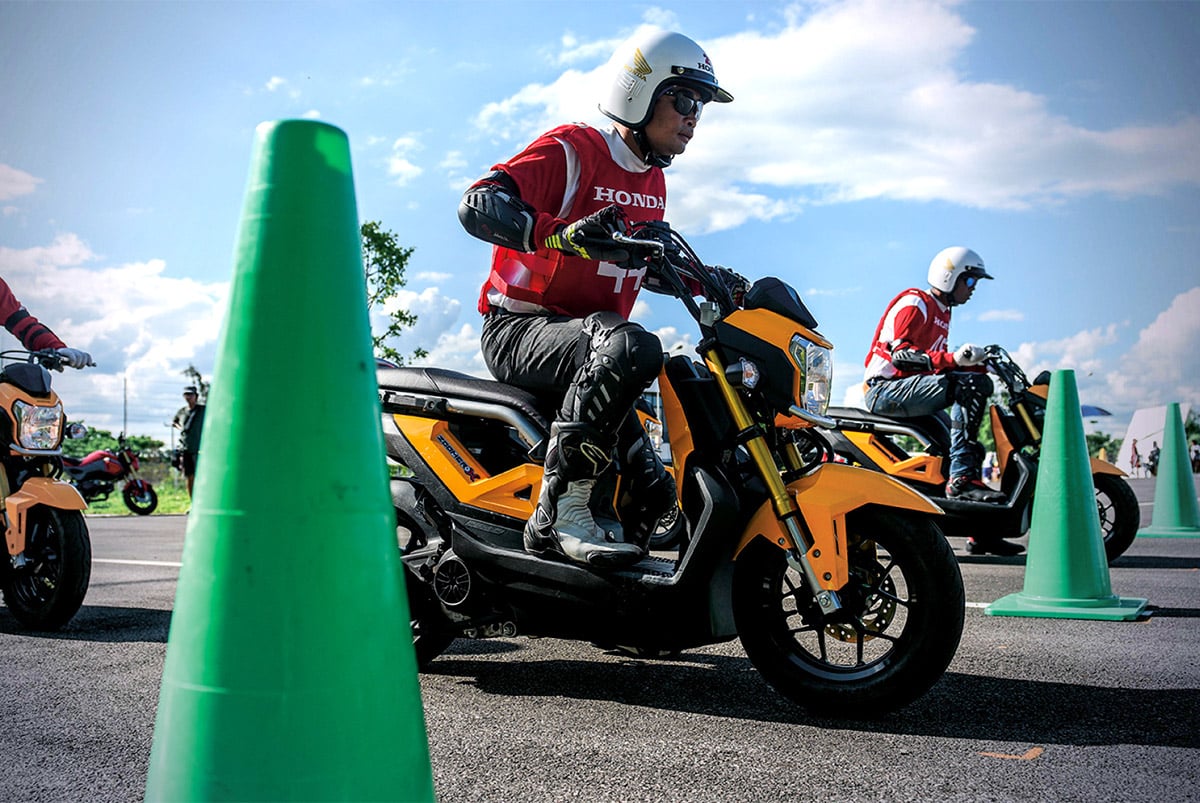
Tip #8
Large trucks and buses have enormous blind spots. When you pull up at a traffic light, the driver of a high cab can easily miss a small motorbike sitting right in front of their bumper. If they roll forward even a little, you could be knocked over or trapped.
To stay safe, always stop a full vehicle length behind a truck or bus, and position yourself where the driver can see you — usually in the far‑left lane. Never wait in the narrow gap between lanes, because drivers behind may not expect a bike there and a heavy vehicle can drift sideways unexpectedly.
If you ignore this and squeeze up too close, you run the risk of being crushed or pinned if the truck moves forward. It only takes one distracted driver to turn a routine stop into an emergency. Give big vehicles the space they need, and they will be less likely to inadvertently harm you.
Tip #9
Modern scooters are lightweight and powerful, so when you press the starter the engine engages the transmission immediately. If you start the bike while standing next to it, it can lurch forward unexpectedly. This isn’t just embarrassing — it can knock over nearby bikes or injure a passer‑by.
The safe way to start a scooter is simple: sit on the seat, plant your feet firmly on the ground, squeeze the brake levers, and then press the starter. This way you’re in control if the bike jumps forward.
Ignoring this advice could mean your scooter accelerates without you, banging into parked cars or toppling over. You might have to pay for repairs, or worse, someone could get hurt. It’s a basic habit that prevents accidents and keeps everyone around you safe.
Tip #10
It’s tempting to ride straight through puddles, but in Thailand a puddle can hide more than a splash. Roadside repairs and construction sometimes leave deep holes covered by rainwater, and what looks like a shallow puddle may conceal a two‑metre drop. Hitting such a hole at speed can bend your rim, damage the suspension or even throw you off the bike.
When you encounter water on a road you don’t know, slow down and steer around if possible. If you must go through, approach slowly and be prepared to stop. Watch how other vehicles navigate it — if cars and bikes avoid it, that’s a clue there might be a hazard underneath.
Disregarding this caution can result in bent wheels, broken forks, and injuries. Repairs will cost you time and money, and your trip could be cut short. A detour around a puddle is a small inconvenience compared to the risk of hitting a hidden obstacle.
Tip #11
Speed limits and traffic rules are there for a reason. In Thai cities, the limit is 50 km/h, which may feel slow but gives you more time to react to unexpected hazards. Exceeding it might save a minute but increases your stopping distance dramatically.
Always check both directions before entering a road or changing lanes, even on one‑way streets. In some parts of Thailand it’s not uncommon to see motorbikes or even cars going the wrong way or using the shoulder as their personal lane. Being alert allows you to spot them and avoid a head‑on collision.
If you ignore these guidelines and speed through busy areas or skip the double‑check, you risk being caught off‑guard by someone going the wrong way, a slow‑moving vehicle turning unexpectedly, or a pedestrian crossing. A moment of inattention can lead to an accident that could have been prevented by taking a little extra care.
Tip #12
In Thailand you’ll often see trucks piled high with construction materials, agricultural produce or other loose items. Poorly secured cargo can bounce out of the truck when it hits a bump, turning into a missile aimed straight at following riders.
If you’re behind a heavily loaded truck, drop back to increase your following distance. If it’s safe, change lanes or pass when you have a clear view. Avoid riding directly behind or alongside the truck’s open bed where debris could fall.
Ignoring this advice could result in flying debris striking you or your bike. Even small objects at highway speeds can cause serious injuries or cause you to swerve and crash. Giving heavily loaded trucks extra space keeps you out of the danger zone.
Tip #13
Those small, half‑shell helmets — often called “cap” helmets — barely cover the top of your head and offer almost no protection to your face or jaw. In a collision they can shatter or fly off, leaving you exposed to serious head injuries.
For real protection, choose a three‑quarter helmet that covers your ears and the back of your head, or better yet, a full‑face helmet that shields your chin and jaw. A well‑fitted, certified helmet significantly reduces the risk of brain injury in a crash.
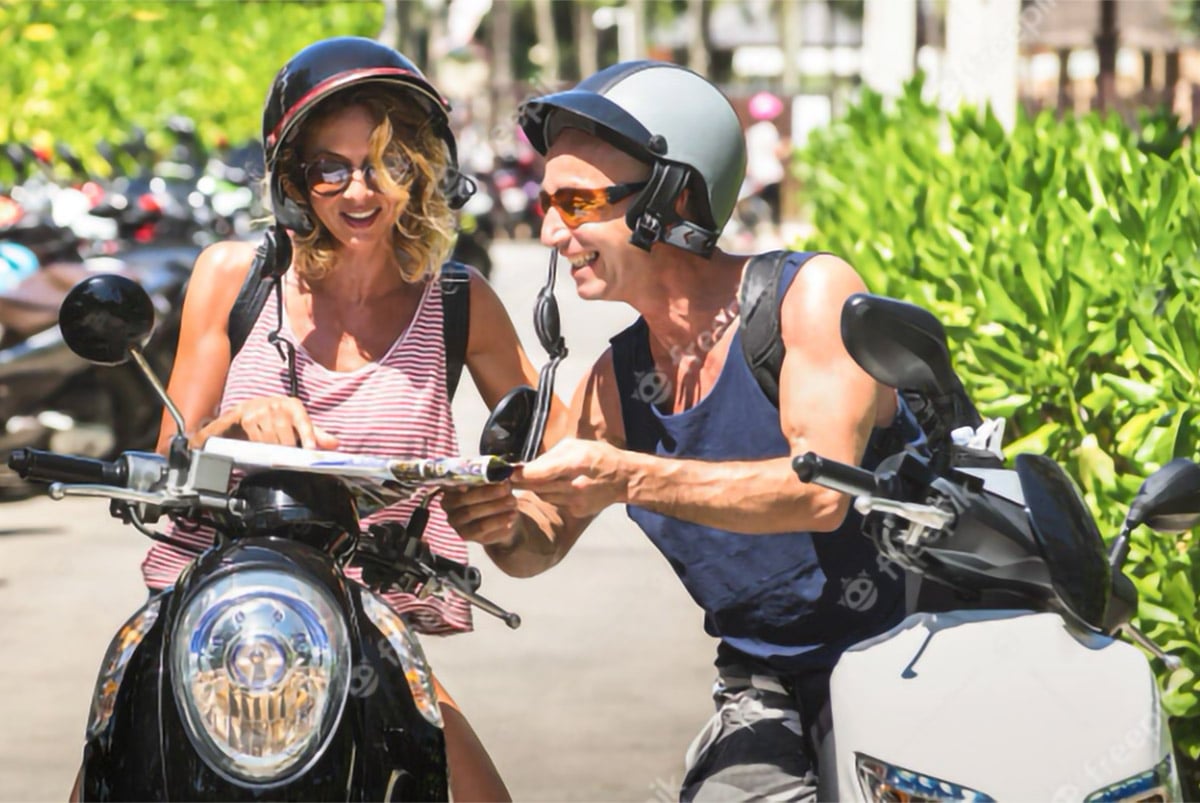
For real protection, choose a three‑quarter helmet that covers your ears and the back of your head, or better yet, a full‑face helmet that shields your chin and jaw. A well‑fitted, certified helmet significantly reduces the risk of brain injury in a crash.
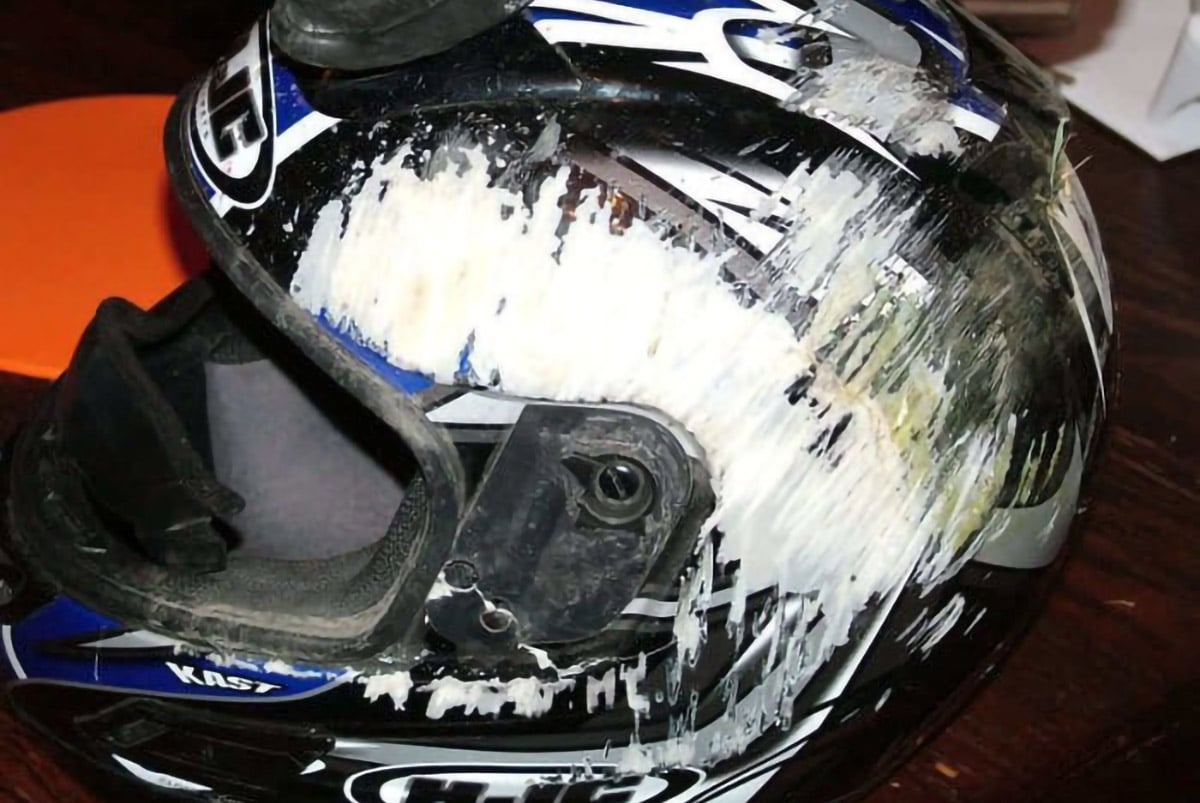
Wearing a flimsy cap helmet might keep the police off your back, but it won’t protect you if you fall. The consequences of a head injury are long‑lasting and devastating. Investing in proper headgear is one of the simplest and most effective safety measures you can take.
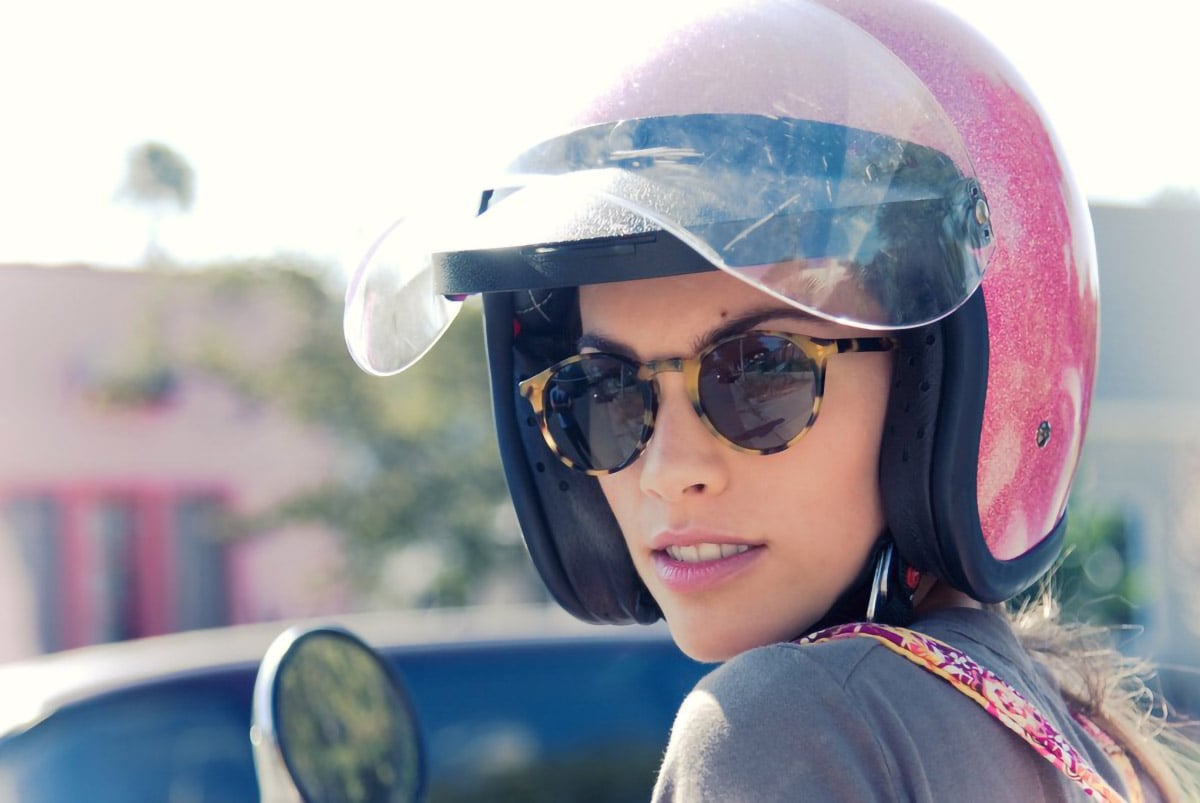
Tip #14
Your bike’s tires need the right air pressure to perform correctly. Underinflated tires flex more, heat up quickly, wear out faster and can suddenly lose grip. Overinflated tires reduce the contact patch with the road, leading to less traction and a harsher ride.
Most scooters and small motorbikes are happiest around 32–33 PSI, but always check the manufacturer’s recommendation printed on the bike or in the manual. Get into the habit of checking tire pressure once a week or every time you refuel. Thai gas stations have free air pumps, and the staff can help if you’re unsure how to use them.
If you neglect your tires, you may notice the bike wobbling or drifting in corners. In extreme cases a tire can fail completely, causing you to lose control. Keeping them properly inflated improves stability, braking and fuel efficiency — and helps you avoid a dangerous blowout.
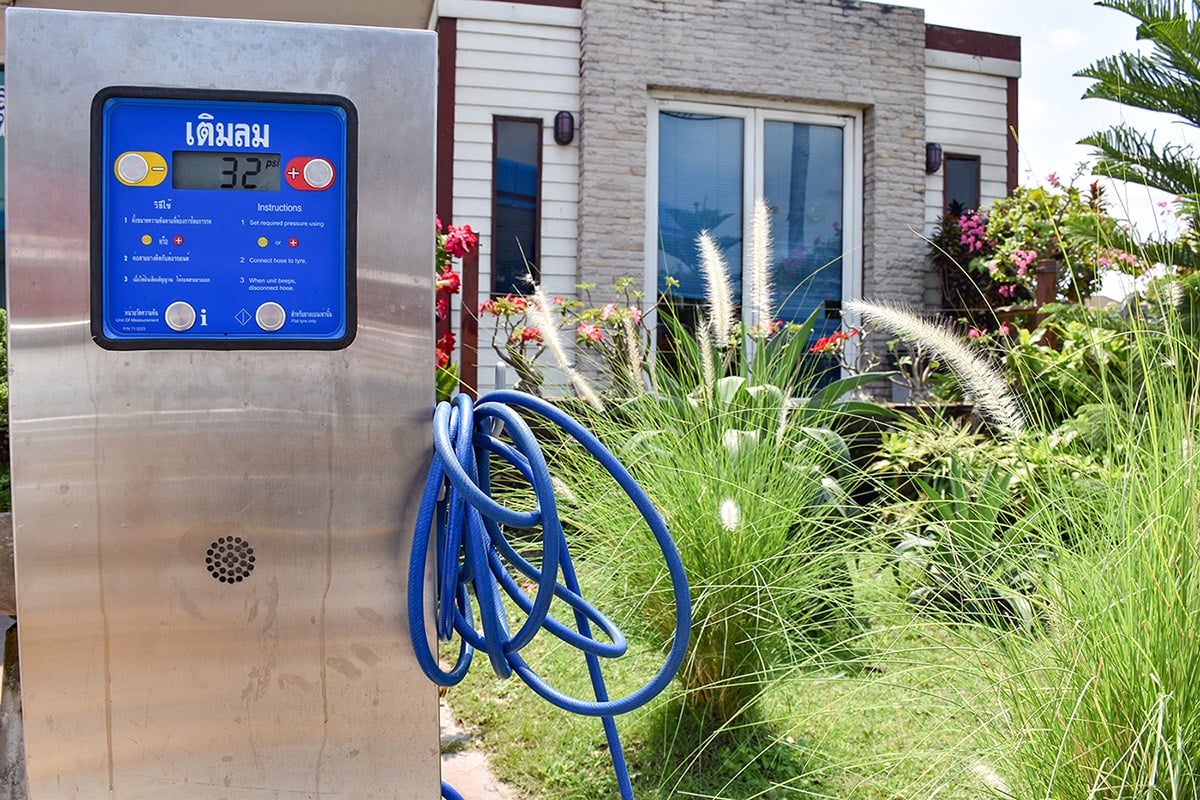
Tip #15
Thailand drives on the left, and sticking to the left side of your lane is especially important on curves and blind corners. Cars and bikes coming the other way may cut the corner or drift over the centre line, and keeping left gives both of you more room to correct your course.
On narrow mountain roads, staying left also lets faster traffic pass you safely. If you hug the centre or cross into the oncoming lane, you could startle other drivers and force them into dangerous manoeuvres.
Ignoring this simple rule can lead to close calls or collisions with oncoming traffic. Staying left is a basic habit that reduces your risk and makes you a predictable, courteous rider to everyone else on the road.
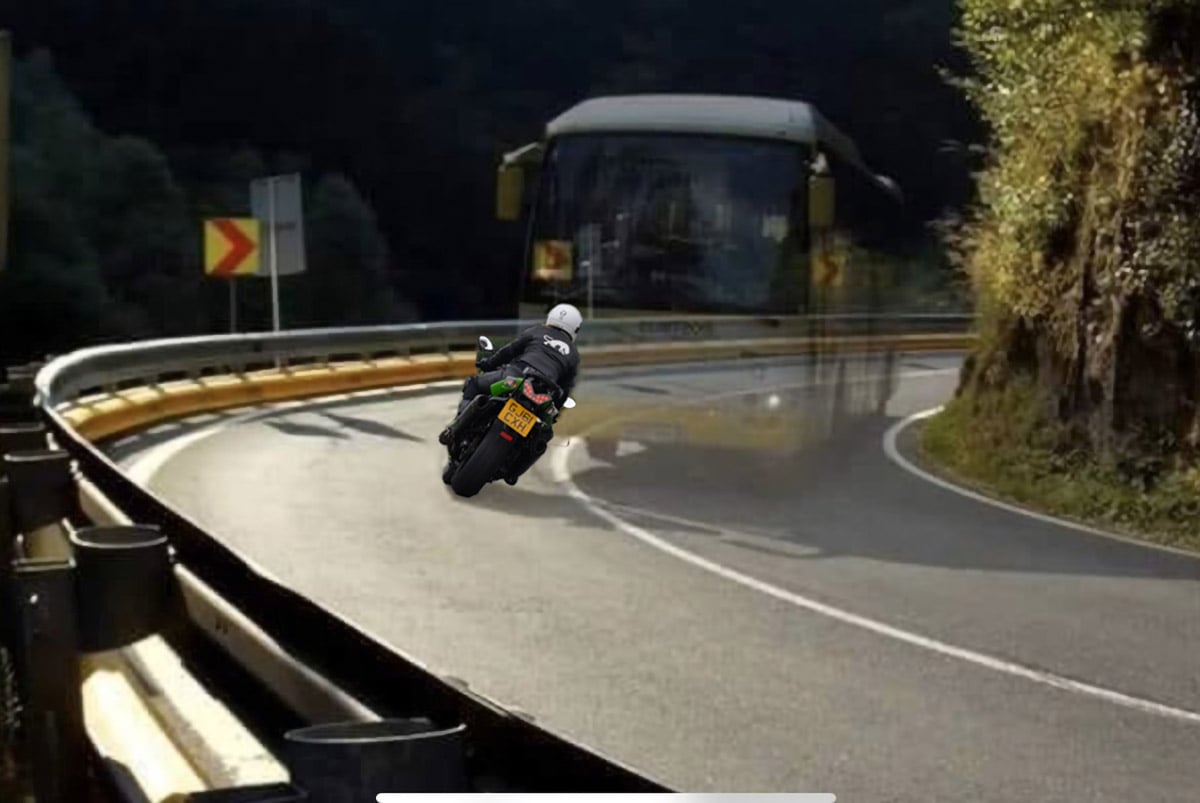
Tip #16
This lighthearted saying — “don’t ride the bear” — is a reminder not to mix animals, stunts and motorcycles. Taking risks like carrying a large animal, overloading your bike with passengers, or trying to act out a viral video may seem funny, but they make controlling the motorcycle nearly impossible.
Stick to carrying only what the bike is designed for and resist the temptation to entertain your friends with circus tricks. Wild and domestic animals should never be transported on a scooter; it’s dangerous for you and stressful for them.
If you ignore this advice and try to ride with a dog, goat or worse on your lap, you risk injuring yourself, the animal and anyone else on the road. Keep your ride sensible and your sense of humor intact — there are plenty of other ways to have fun in Thailand.
Embark on an unforgettable journey through Northern Thailand with the help of our detailed travel guides. They showcase the best scenic routes and local highlights. For those ready to begin, our scooter rental in Chiang Mai offers excellent options. It’s also important to review our terms and conditions to be well-prepared. With these resources, you can confidently explore mountain trails and charming villages, making the most of your Northern Thailand adventure.
Our website is packed with valuable information to help you make the most of your motorbike adventure. By utilizing these resources, you can ensure a well-planned, memorable trip that captures the true essence of Northern Thailand’s natural and cultural treasures.
Cat Motors Team
- Author: Konstantin Zh
- Updated: 16/09/2025




